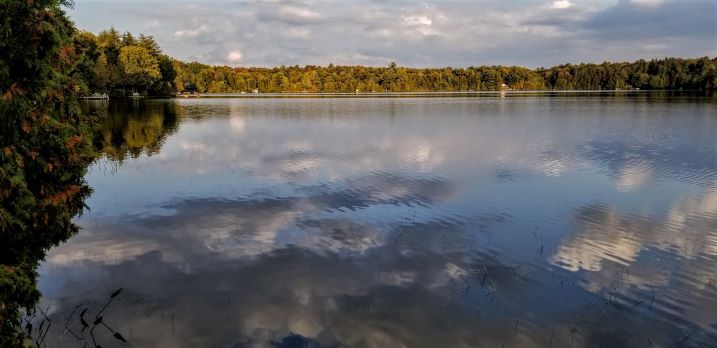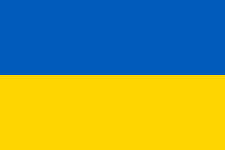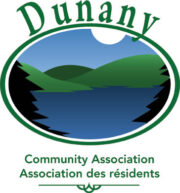The results for 2021 are in. Have a look at the charts! Boyd – Black – Clear – Curran.
All four are classified oligotrophic, that is lakes that have ” low nutrient content and are considered geologically young, or little modified by weathering and erosion products'”, as defined by Oxford University.
The data that supports this assessment is made up of two parts. Regular transparency readings taken from June to October and water samplings collected three times during the summer to measure total phosphorus, chlorophyll (micro grams/lire), as well as dissolved carbon oxygen (milligrams/litre). So, you are looking for low phosphorus and chlorophyll count and good oxygenation of water for fish like trout to thrive.

France and I are assisted by a wonderful group of volunteers that deserve your appreciation. They are Bonnie Swaine on Boyd, Jim and Lois Finch on Black, François Côté on Clear and Sheryl Jackson-Caron on Curran where I took the above photograph.
As I have written over and over, lakes are very fragile. We are lucky that there is no agriculture or significant commercial activity in our watershed. So, the main threat to the health of our lakes is us! Our actions and behaviour are the key determinant to the future of our lakes. Following are 5 essential actions for each and everyone of us. I know that most of you are aware of them but I figured a quick reminder would be useful.
- Wash all boats and accessories that have navigated outside of our watershed. Our main threat is contamination with Eurasian Watermillfoil, an exotic very invasive aquatic plant that has already contaminated about 50 lakes in the Laurentians. Plants are rooted at the lake bottom and grow rapidly creating dense beds and canopies. A terrible nuisance and it it almost impossible to get rid of it.
- Make absolutely sure that your septic system is cleaned regularly. Every two years if you are a permanent resident; every four years if you are a cottager. I have used Sani-Nord is the past and got good service. They are now owned by Beauregard Environment which has been found guilty of major environment infractions and kicked out of Montreal. I will now use Fosses Septiques Miron, a local company, which also offers so-called selective cleaning, a process whereby filtered water is put back in the tank. A good choice.
- Make your shoreline protection band as robust as possible. Where possible, the law says it should be at least 10 meters wide. The pathway to the lake should be curved so as to prevent runoff water to flow directory to the lake. This to prevent nutrients found naturally on the ground to be rushed towards the lake during a rainfall. Finally, no work should be on protection band, It should stay in its natural state.
- Refrain from using fertilizers ans pesticides near the lake and, if possible, on your whole property. If you have a lawn, mulch the leaves in the fall. It fertilizes it naturally.
- No fires or fireworks close to the lakes, please! Fire remains contain a lot of phosphorus that can washed into the lake after a rainfall. Same with fireworks which we discourage anyway because, for many people, it is a nuisance.
By the way, the RSVL sampling program cost to the DCA in 2021 was 480,00$ and we got a 350$ subsidy from the Township of Wentworth! Merci Wentworth.
Did you know that after the ice cover on a lake melts in the spring, warmer surface water becomes heavier and thus sinks to mix with deeper water. At that moment of the year, all the water in the lake is at the same temperature.


Nice work Jacques, thanks for working on this and sending out reminders.
Merci Jacques! Always great to be reminded about what we need to do! 😊
Great summary Jacques good points to remember about lake health